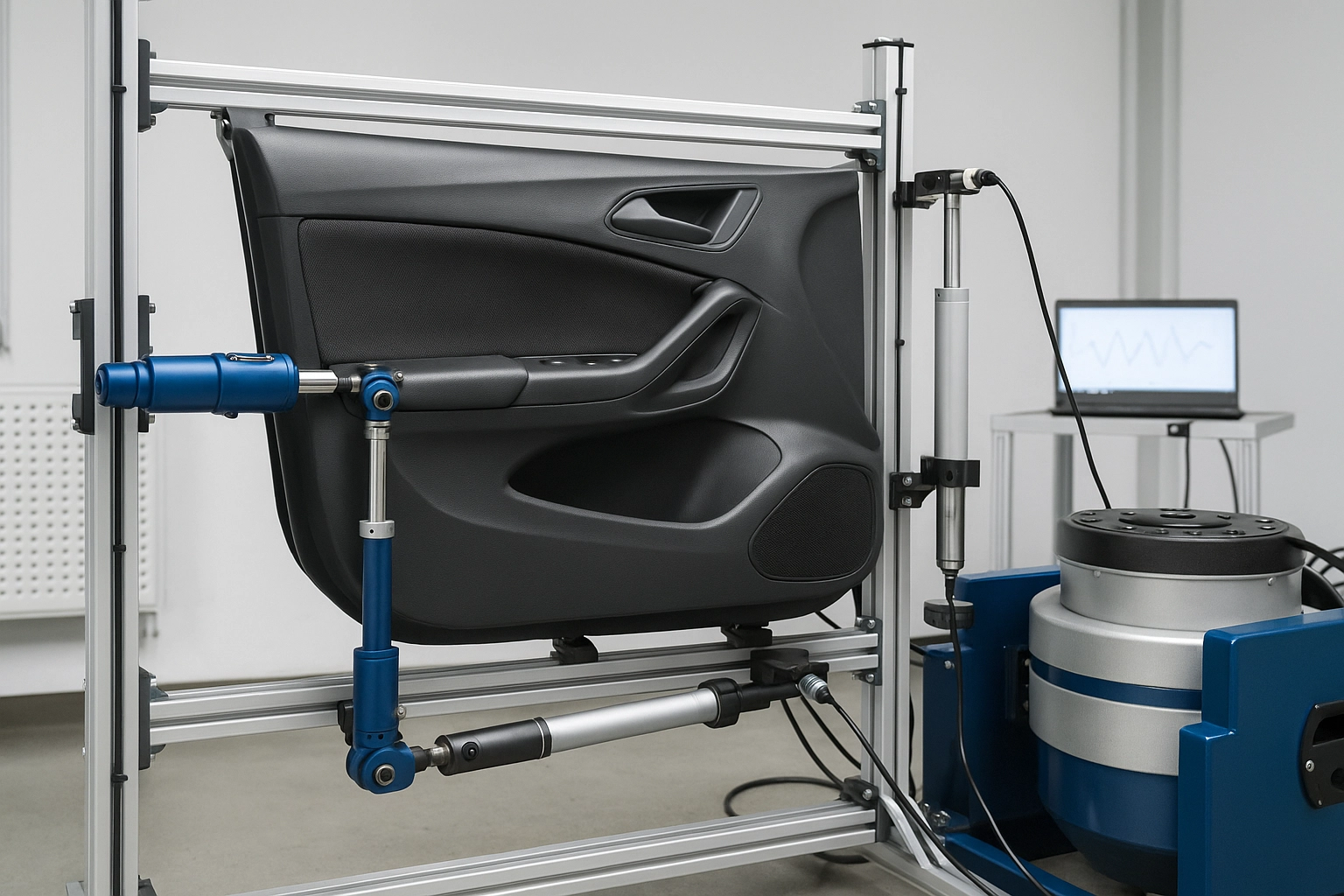JIS D0207 Automotive Glass BSR Acoustic Testing
The JIS D0207 standard specifies methods for evaluating the acoustic characteristics of automotive glass, particularly focusing on reducing Buzz, Squeak & Rattle (BSR). This service is essential for manufacturers to ensure their vehicle windows and windshields meet stringent noise, vibration, and harshness (NVH) performance requirements. Automotive glass plays a critical role in sound insulation, passenger comfort, and overall vehicle safety.
BSR issues can arise from various factors such as the design of the window frame, the quality of the seal between the glass and the frame, or the material properties of the glass itself. The JIS D0207 test aims to identify these potential sources early in the development process to prevent costly recalls and improve customer satisfaction.
The testing protocol involves placing a specimen of automotive glass into an acoustic chamber where it is subjected to specific sound frequencies that simulate real-world driving conditions. This method allows for the precise measurement of noise levels, vibration patterns, and structural integrity under stress. The test apparatus typically includes an anechoic chamber, microphones positioned around the specimen, and a data acquisition system capable of recording detailed acoustic data.
The primary goal of this testing is to ensure that automotive glass meets the specified performance criteria outlined in JIS D0207. These criteria include maximum permissible noise levels at various frequencies and acceptable vibration patterns under defined conditions. By adhering to these standards, manufacturers can produce products that not only meet regulatory requirements but also enhance the driving experience.
The testing process is highly technical and involves careful preparation of the specimen. This includes ensuring the glass is free from defects and properly mounted in a frame designed to simulate real-world use. Once prepared, the glass is placed into an acoustic chamber where it undergoes rigorous testing under controlled conditions. The data collected during this process is analyzed using advanced software tools to determine compliance with JIS D0207.
For quality managers and compliance officers overseeing automotive glass production, this service provides critical insights into potential BSR issues before they become significant problems. R&D engineers benefit from the detailed acoustic analysis provided by this testing method, allowing them to refine designs and materials continuously. Procurement teams can use the results of these tests to ensure suppliers meet the highest quality standards.
The JIS D0207 standard is recognized globally for its stringent requirements in automotive glass manufacturing. Compliance with this standard demonstrates a commitment to excellence in product development and production, enhancing brand reputation and customer trust.
Scope and Methodology
The scope of JIS D0207 Automotive Glass BSR Acoustic Testing encompasses the evaluation of acoustic properties of automotive glass. The methodology involves placing a specimen of automotive glass into an acoustic chamber where it is subjected to specific sound frequencies that simulate real-world driving conditions. This test ensures that the glass meets stringent noise, vibration, and harshness (NVH) performance requirements.
The testing protocol includes several key steps. Firstly, the specimen must be prepared according to JIS D0207 specifications, ensuring it is free from defects and properly mounted in a frame designed to simulate real-world use. Once prepared, the glass is placed into an acoustic chamber where it undergoes rigorous testing under controlled conditions.
- Preparation of Specimen: Ensuring the glass is defect-free and correctly mounted.
- Placement in Chamber: Positioning the specimen within the acoustic chamber for testing.
- Sound Frequency Simulation: Subjecting the glass to specific sound frequencies that simulate real-world driving conditions.
The data collected during this process is analyzed using advanced software tools to determine compliance with JIS D0207. This comprehensive approach ensures that automotive glass meets the specified performance criteria, enhancing both product quality and customer satisfaction.
Benefits
Implementing JIS D0207 Automotive Glass BSR Acoustic Testing offers numerous benefits to manufacturers in the automotive sector. By adhering to this standard, companies can ensure their products meet stringent noise, vibration, and harshness (NVH) performance requirements, enhancing both product quality and customer satisfaction.
One of the primary advantages is the ability to identify potential BSR issues early in the development process. This allows manufacturers to address these issues before they become significant problems, reducing costly recalls and improving brand reputation. Additionally, compliance with JIS D0207 demonstrates a commitment to excellence in product development and production.
The testing method provides detailed acoustic analysis that can be used to refine designs and materials continuously. This continuous improvement process ensures that automotive glass meets the highest quality standards, enhancing both product performance and customer trust. Furthermore, by ensuring compliance with international standards like JIS D0207, manufacturers can gain a competitive edge in the global market.
The results of this testing method are highly reliable and repeatable, providing consistent data across multiple tests. This consistency ensures that the final products meet the specified performance criteria consistently, enhancing overall product quality.
Industry Applications
- Automotive Manufacturing: Ensuring that automotive glass meets stringent NVH performance requirements.
- Window Frame Design: Identifying potential BSR issues in the design of window frames.
- Material Selection: Evaluating the acoustic properties of different glass materials for use in automotive applications.
- Supplier Quality Control: Ensuring that suppliers meet the highest quality standards for automotive glass production.
This testing method is particularly useful in the automotive manufacturing industry, where NVH performance is a critical factor. By identifying potential BSR issues early in the development process, manufacturers can address these issues before they become significant problems, reducing costly recalls and improving brand reputation. Additionally, this testing method provides detailed acoustic analysis that can be used to refine designs and materials continuously.





